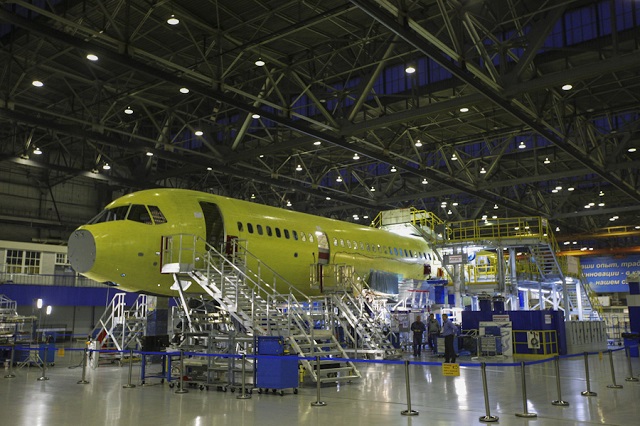Uncategorized
Russia’s MC-21: A New Chapter in Aviation Amid Sanctions and Global Realignment

Overcoming Sanctions: Russia’s Push for Aviation Independence
In the wake of sweeping Western sanctions following its invasion of Ukraine, Russia’s aviation industry has been forced into a corner. Once heavily reliant on aircraft and parts from Airbus and Boeing, the country’s access to critical foreign components has been virtually severed. This has prompted a dramatic shift toward domestic production, culminating in the development of the MC-21, a medium-range airliner intended to replace the A320 and 737 MAX families in Russia and aligned markets.
On April 25, 2025, the Russified version of the MC-21-310, fully equipped with Russian-made systems and the PD-14 engine, successfully completed its maiden flight—a significant milestone for Russian aerospace. The aircraft has been in development by Irkut Corporation under the United Aircraft Corporation (UAC) and symbolizes Russia’s growing technological independence.
Production Goals and Certification Timeline
Russia plans to enter serial production of the MC-21 by 2026, with 18 aircraft expected to be delivered initially and a target of 210 aircraft by 2030. Despite these ambitions, the program has faced repeated delays, largely due to disrupted supply chains and the need to replace 40–50% of its Western components.
This substitution process, known as “Russification“, has resulted in a weight increase of approximately 6 tons, reducing the aircraft’s range from its original 6,000 km to around 2,800 km. The reduced use of advanced composite materials, such as carbon fiber-reinforced polymer once sourced from abroad, has contributed significantly to this performance drop.
Still, the PD-14 engines, now in mass production, are being integrated into early MC-21 units. A fully domestically-built version is undergoing testing to meet Russian safety and performance standards, with the goal of final certification in 2025.
Market Potential and Competitive Position
As of now, the MC-21 has received approximately 290 firm orders, primarily from Russian airlines like Aeroflot and other carriers within the former Soviet sphere, including some in Azerbaijan. Notably, 99 aircraft have been ordered without assigned operators. Priced at around 3 billion rubles (roughly US$37 million), the MC-21 costs nearly half as much as the Boeing 737 MAX 8, thanks to state subsidies and localized production.
Despite its competitive price and modern design—featuring composite wings and a wide cabin—the MC-21’s lack of international certification (e.g., EASA, FAA) severely limits its appeal outside Russia and its allies. Its market remains mostly domestic and politically aligned nations.
A Strategic Answer to Sanctions: Comparison with China’s C919
Russia’s effort mirrors that of China, which has developed its own narrow-body jet, the COMAC C919. The C919 has rapidly gained domestic popularity, having carried over 2 million passengers and accumulated more than 1,200 orders. However, unlike the MC-21, the C919 still relies on Western-made components, including engines and avionics.
China is now looking to expand its aircraft program with the C939, a wide-body, dual-aisle jet designed for longer hauls and higher passenger capacity. This development aims to reduce dependence on Boeing and Airbus even further—an ambition Russia shares through future expansion into both short- and long-range aircraft.
Iran and the Middle East: Potential Export Markets
Countries like Iran, which also face severe Western sanctions, stand to benefit from the MC-21’s development. Iran’s civil aviation sector has struggled to maintain its fleet, relying on outdated aircraft and substitute components. A fully domestically-produced aircraft like the MC-21, free of Western parts, presents an ideal solution for modernizing Iran’s airlines without risking sanctions.
The MC-21-310, capable of carrying up to 211 passengers, could even be assembled or produced locally in countries like Iran. This aligns with Russia’s deepening strategic ties with Tehran, highlighted by a 20-year cooperation agreement signed in April 2025.
On another front, Saudi Arabia had shown interest in partnering with China to produce the C919, but similar sanctions and export control limitations have made such deals challenging. In this vacuum, Russia could emerge as a viable alternative, potentially establishing manufacturing or support hubs in the Middle East if the MC-21 proves successful.
A Record-Setting Achievement and Future Outlook
Russia has set a new global precedent by becoming the first country to fully design and produce a commercial airliner without relying on foreign components. While challenges remain—such as the aircraft’s increased weight and reduced range—the successful development and flight of the MC-21 under harsh sanctions is widely seen as a symbolic and strategic victory.
The aircraft has already drawn positive media attention in Russia and beyond, hailed as a “Made in Russia” success story. With plans to manufacture 600 units by 2030, Russia hopes the MC-21 will gain ground in export markets, especially among nations seeking alternatives to Western aviation products.
What’s your take on the MC-21 program? Can it truly compete with the Airbus A320neo and Boeing 737 MAX on the global stage? Let us know your thoughts in the comments below.

